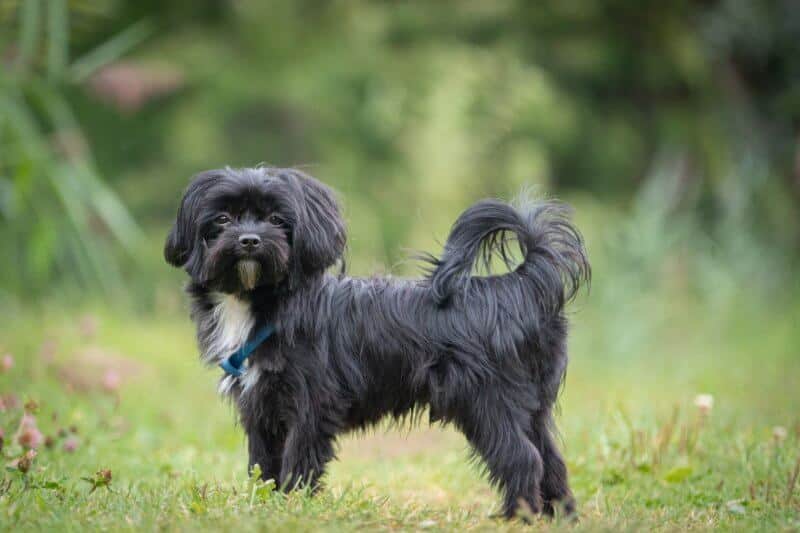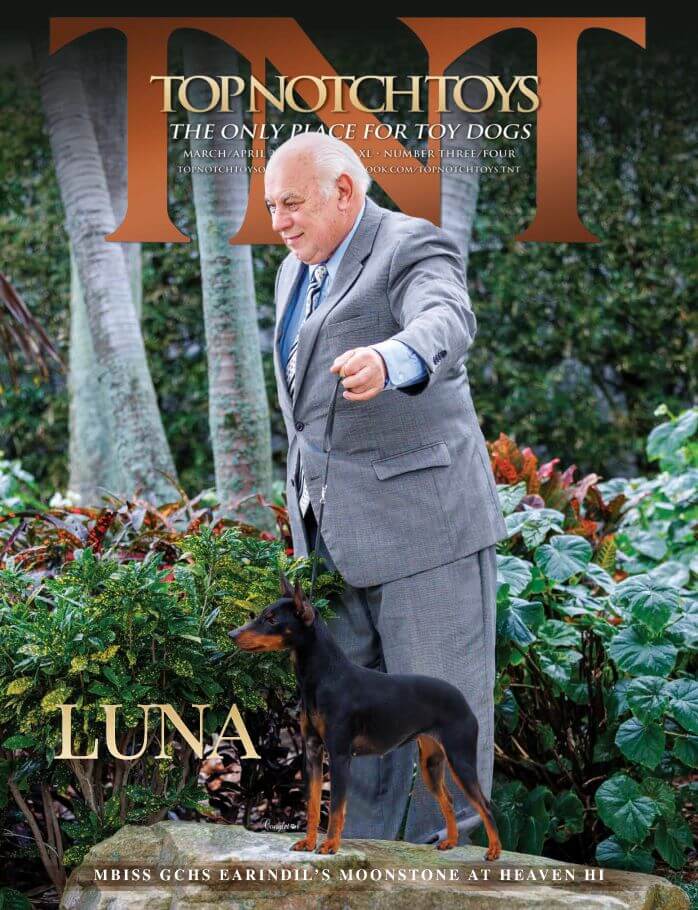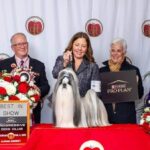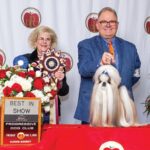After World War II, small dogs with silky hair were brought to Leningrad. These dogs did not have any pedigrees. The Russian Tsvetnaya Bolonka was created by a group of enthusiasts whose goal was to create a small companion dog which would be ideal for apartment living. The Leningrad group of decorated dog breeders recognized the colored lapdog as a breed in the early 1950s. By the end of the ‘50s, through careful and rigorous selection, mainly by phenotype, and later, by the quality of the offspring, a true breed type was obtained, which received the status of a breed by the Russian Kynological Federation.
Additional small breeds were introduced such as Maltese, Shih Tzu, and Bolognese, among others, to improve the coat and to create a non-shedding breed. The breeders were restricted to solid colors other than white, however, allowing silver or tan point markings. The first entry of a Russian Tsvetnaya Bolonka was added to the Russian Kynological Federation in 1958. The official standard was accepted in 1966 by the All-Union Cytological Council and the breed made its first appearance at exhibition in 1967.
My Experience with Russian Tsvetnaya Bolonka
I saw a picture of a Russian Tsvetnaya Bolonka on the Internet in the year 2000. I was unable to get the dog out of my mind. As fate would have it, that same year, I judged a Russian conformation breed show in Brooklyn, New York, and met some of the Russian judges who were at the show. We discussed the Russian Tsvetnaya Bolonka breed, and I received a promise that when they returned to Russia, they would find a puppy and send it to me. In September of that year, after a six month wait, I received a darling female puppy by the name of Ludushki Ocharovashk. “Gigi,” as she was called, was the best ambassador the breed could have in the United States.
Gigi never met a person she didn’t like and would stand on two legs and dance for whatever audience she could find. In 2001, I was joined by Havanese breeder Dr. Patricia McRae, and we imported a male and another female. The following year we were joined by two more Havanese breeders, Jane Falkenstein and Nancy Holmes, and imported another male and three females. By 2004, there were other kennels breeding Russian Tsvetnaya Bolonkas. Notable was Thereasa Huff’s kennel, Bolonka Treasures in Arizona, Cindy Jensen and Glinda Harrison with My Darling Dogs kennel in Idaho, and Debbie Buse with Debbi’s Bolonkas kennel in Minnesota.
In the Russian Tsvetnaya Bolonka we found the ultimate companion dog. This is a breed that does all the things expected of a Toy dog—and more. They make great Rally dogs along with doing Agility and regular Obedience. I also have a Russian Tsvetnaya Bolonka that lives in Arizona and walks two miles a day with her owner.
Russian Tsvetnaya Bolonka are a relatively healthy breed of dog. We test for all the usual things such as heart, patellas, hips, and most importantly, a DNA test for PRA-cd. At the time the lab is testing, they can also test the breed for furnishings, which could be lacking.
Most long-coated breeds have a short coat variety, and the Russian Tsvetnaya Bolonka is no exception. All Russian Tsvetnaya Bolonka should have their furnishings (moustache and beard). Many Russian Tsvetnaya Bolonkas that are kept as companion dogs have their coat in a puppy cut. This makes it easier to manage their coats. Dogs being shown must be in full coat, along with the moustache and beard. Puppies are allowed to be shown in their puppy coat.
The Russian Tsvetnaya Bolonka comes in many colors, from light fawn to solid black. Disqualifying colors are solid white, parti-colored, and merle. For more information, please visit our club website.
Featured photo courtesy by the American Kennel Club (AKC).










